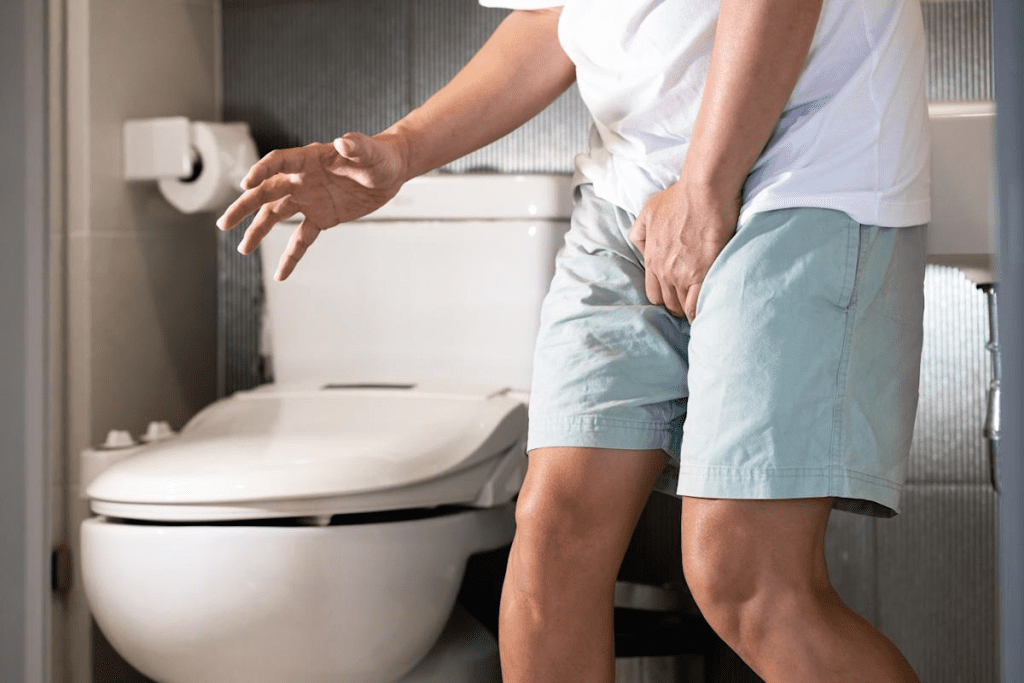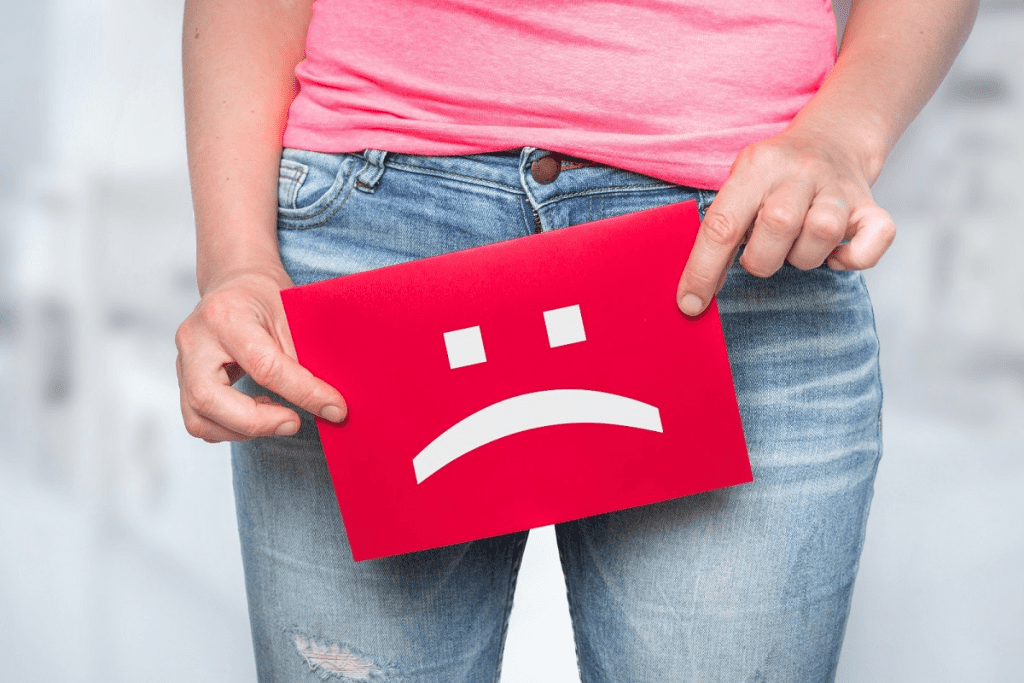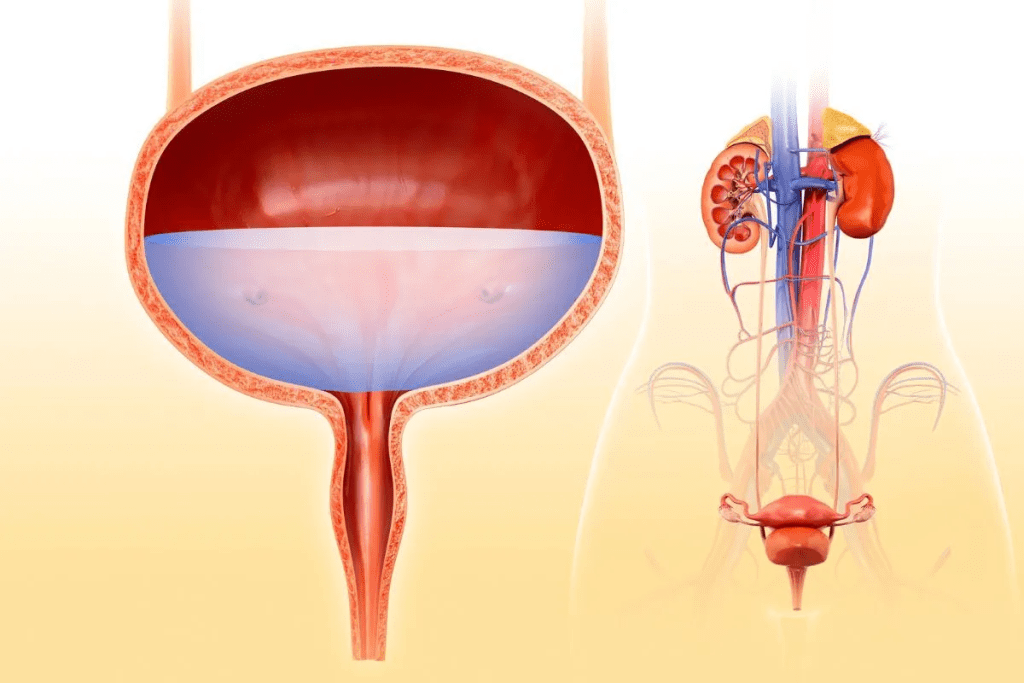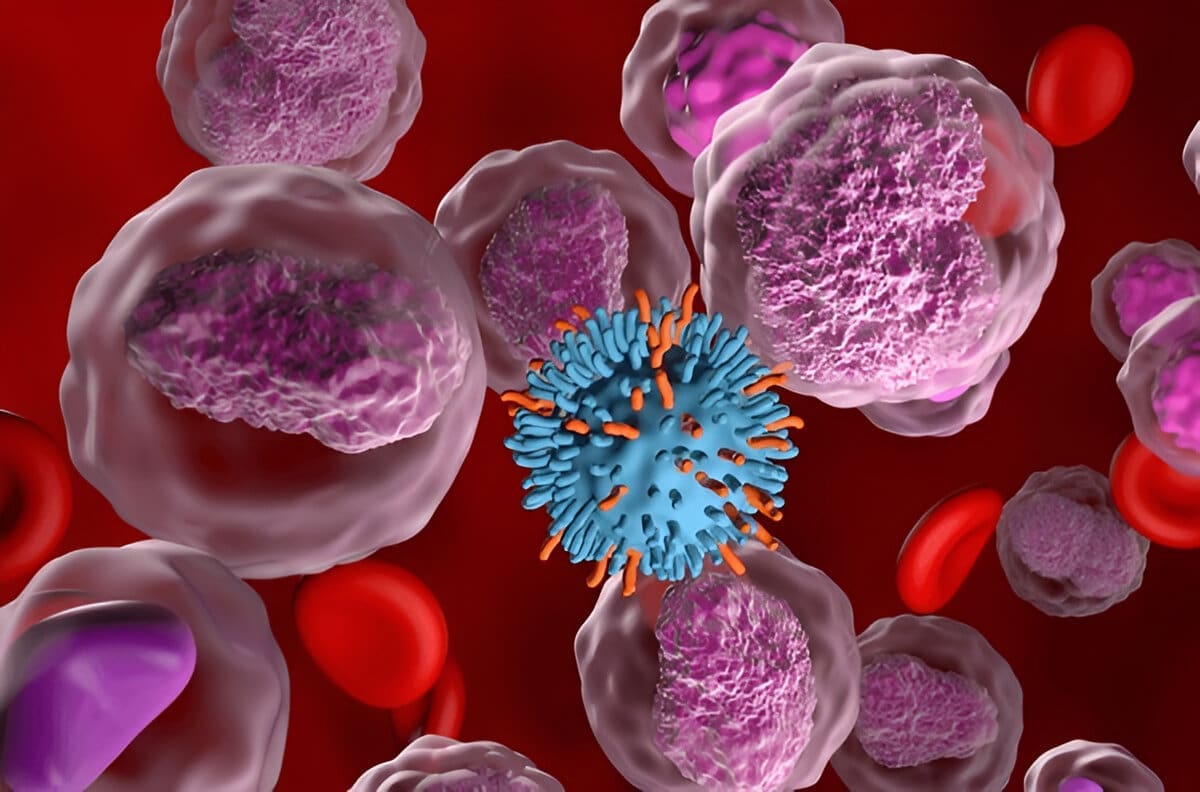Last Updated on November 26, 2025 by Bilal Hasdemir

Investigate the myth of holding pee strengthening the bladder and learn about its actual impact on various bladder problems.
Millions of people worldwide deal with urinary issues. Many wonder if holding their pee can help. The big question is: does holding urine really strengthen the bladder?
People often ask about bladder control exercises, mainly women. Holding pee seems like a simple way to strengthen the bladder. But is it supported by medical evidence? We’ll look into this, sharing insights from medical experts on bladder health and how to keep your urinary system healthy.
Key Takeaways
- Understanding the impact of holding pee on bladder health.
- Exploring effective bladder control exercises for women.
- Insights into managing urinary issues naturally.
- The importance of professional medical advice for bladder problems.
- Practical tips on how to hold your pee correctly.
The Urinary System: Structure and Function

The urinary system is key to our health. It filters waste and excess fluids. It includes the kidneys, bladder, and urinary tract, working together to keep us healthy.
Anatomy of the Bladder and Urinary Tract
The bladder is a muscular organ in the pelvis, behind the pubic bone. In females, it’s in front of the uterus and vagina. It stores urine from the kidneys through the ureters.
The ureters are narrow tubes that carry urine to the bladder. The bladder holds urine until it’s full. Then, it pushes urine out through the urethra.
The urethra is the tube that lets urine out of the body.
Normal Bladder Function and Capacity
A healthy bladder can hold 400-600 milliliters of urine. It should store urine without leaking and empty completely when you urinate. Most people urinate 4-7 times a day, based on how much they drink.
- The bladder muscle (detrusor) relaxes to store urine.
- The urethral sphincter contracts to prevent leakage.
- During urination, the detrusor muscle contracts, and the urethral sphincter relaxes.
Keeping the urinary tract healthy is vital. It helps prevent infections and keeps the system working right. Stay hydrated, urinate when you need to, and keep clean.
Knowing how the urinary system works helps us take care of it. By understanding the bladder and urinary tract, we can improve our health.
The Science Behind Holding Urine

Many people have held their urine at some point. But have you ever thought about what happens in your body? When you hold your pee, your bladder stretches to fit the urine. This stretching causes changes that can affect your health now and later.
What Happens Physiologically When You Hold Your Pee
When you hold your urine, your bladder muscle relaxes and grows. This can make your bladder hold more urine. But holding it for too long can cause problems like urinary tract infections or bladder damage.
Holding urine also affects your kidneys. They keep making urine, which can cause a buildup in your urinary system. This is a big issue for people with kidney problems.
How Long Can the Average Person Hold Their Urine?
How long you can hold your urine depends on many things. These include your age, how much you drink, and your health. Usually, people can hold it for 3 to 5 hours. But it really depends on your hydration levels, activity level, and bladder health.
- Fluid intake: Drinking a lot of fluids can reduce the time you can hold your urine.
- Age: Older adults may find it more challenging to hold their urine due to decreased bladder elasticity.
- Health conditions: Certain conditions, such as diabetes or neurological disorders, can affect bladder control.
Knowing these factors can help you manage your urinary health better. It can also help you avoid problems from holding urine for too long.
Does Holding Urine Actually Strengthen Your Bladder?
Many think holding urine can make their bladder stronger. But what do doctors really say? We’ll look at the facts, comparing strengthening and stretching the bladder muscle.
Medical Research and Expert Opinions
Studies show mixed results. Some say holding urine can make the bladder muscle grow, helping control. But, experts warn it can also stretch the bladder too much, causing problems.
A urologist, says, “Holding urine might make the bladder stronger short-term. But it’s not the best way to fix bladder control issues or bladder dysfunction.” She believes more research is needed to understand its long-term effects.
Distinguishing Between Strengthening and Stretching
It’s important to know the difference between making the bladder muscle stronger and just stretching it. Strengthening means the muscle can hold urine better. Stretching might just make the bladder bigger without making it stronger.
To really strengthen your bladder, you need a full plan. This includes pelvic floor exercises like Kegels and bladder training. Holding urine might stretch the bladder, but it’s not a good long-term solution for urinary incontinence.
In summary, while holding urine might seem like a good idea, doctors don’t recommend it as the only solution. A mix of proven methods and expert advice is best for better bladder health.
Potential Risks of Regularly Holding Your Pee
Holding urine for too long can harm your health. It might seem like a small problem, but it can have big effects on your bladder health.
Short-term Consequences
Regularly holding urine can cause immediate problems. Some of these include:
- Urinary Tract Infections (UTIs): Stagnant urine can breed bacteria, causing infections.
- Discomfort and Pain: Holding urine too long can cause discomfort, pain, and a need to go urgently.
- Bladder Overdistension: The bladder can swell, leading to temporary dysfunction.
Long-term Health Implications
Long-term urine holding can harm your urinary system. Some long-term effects include:
- Chronic Urinary Tract Infections: Recurring UTIs can lead to more serious problems.
- Urinary Incontinence: Weakened bladder muscles can cause incontinence, affecting your life quality.
- Bladder Damage: Long-term swelling can damage the bladder, affecting its function.
Good bladder health means being careful with urination. Using urinary tract vitamins and urinary tract supplements can help. But, always talk to a doctor before starting any new supplements.
| Health Risk | Short-term Impact | Long-term Impact |
| Urinary Tract Infections | Discomfort, Pain | Chronic Infections, Possible Kidney Damage |
| Bladder Overdistension | Temporary Dysfunction | Permanent Bladder Damage |
| Urinary Incontinence | Occasional Leaks | Chronic Incontinence, Affects Life Quality |
Knowing the risks and taking steps to prevent them is important. If you have ongoing bladder symptoms, see a doctor. They can help find and treat any problems.
Common Bladder Problems and Their Causes
Millions worldwide face bladder issues like overactive bladder and urinary incontinence. These problems affect daily life and treatment is a big challenge.
Overactive Bladder Syndrome
Overactive bladder syndrome makes you suddenly need to pee, often without control. This can mess up your day and sleep. It might be due to nerve damage or health issues like diabetes.
“The symptoms of overactive bladder can be quite debilitating,” – A urologist. “Understanding the underlying causes is key for managing it well.”
Types of Urinary Incontinence
Urinary incontinence means losing bladder control and peeing without meaning to. There are stress, urge, and mixed types. Stress incontinence happens when moving or pressure on the bladder causes leaks, while urge incontinence is a sudden, strong need to pee.
- Stress Incontinence: Leakage during physical activities like coughing, sneezing, or lifting.
- Urge Incontinence: Sudden, intense urge to urinate, often resulting in leakage.
- Mixed Incontinence: Combination of stress and urge incontinence.
Urinary Tract Infections and Bladder Health
Urinary tract infections (UTIs) are bacterial infections in the urinary system. When they hit the bladder, they cause pain, frequent need to pee, and belly pain. Recurring UTIs can turn into serious bladder issues if not treated.
To avoid UTIs, drink plenty of water, pee after sex, and keep clean. Treatment usually means antibiotics. Sometimes, you need to find out why it keeps happening.
Signs Your Bladder Health May Be Compromised
It’s important to know the signs of bladder health problems early. Your bladder is key to your urinary system. Any issues can really affect your life.
Warning Symptoms to Watch For
There are several signs your bladder might be in trouble. These include:
- Frequent urination, often with a feeling of urgency
- Pain or burning when you pee
- Not being able to fully empty your bladder
- Seeing blood in your urine
- Leaking urine when you cough, sneeze, or laugh
- Waking up to pee a lot at night
If you notice any of these signs, you should pay attention. Seeing persistent or severe symptoms means it’s time to see a doctor.
When to Seek Medical Attention
Knowing when to see a doctor for bladder issues is key. If you’re dealing with any of these, get help right away:
- Severe pain in your lower belly or back
- Fever with urinary symptoms
- Not being able to pee
- Blood in your pee or semen
- Constant urine leakage
Getting a diagnosis and treatment early can really help with bladder problems. It’s smart to look after your urinary health and get help when you need it.
Knowing the signs of bladder issues is the first step to good urinary health. If you’re worried about your bladder, talk to a healthcare professional. They can offer advice and support.
Healthy Bladder Habits to Adopt
Keeping your bladder healthy is about drinking the right amount of water and going to the bathroom often. By following these habits, you can lower your risk of urinary tract issues and keep your system strong.
Optimal Urination Frequency
Knowing when to go to the bathroom is key for bladder health. Urination frequency changes for everyone, but aim to go when you feel the urge. Most people should go 4-7 times in 24 hours. But, this can change based on how much you drink and your body.
Not listening to your body’s need to go or waiting too long can cause urinary tract infections and other problems. But, going too often can also mean there’s an issue, like an overactive bladder.
Proper Hydration Practices for Bladder Health
Drinking enough water is vital for your urinary system’s health. It helps remove bacteria and toxins, lowering infection risks. Aim for 8-10 glasses of water a day, but this can vary based on your activity level, where you live, and your body’s needs.
Some bladder cleansing foods can also help. Foods rich in antioxidants, like berries and leafy greens, protect your bladder and urinary tract. Cranberries are also known to help prevent urinary tract infections.
- Drink water regularly throughout the day.
- Incorporate bladder-friendly foods into your diet.
- Avoid irritants like caffeine and spicy foods that can affect bladder health.
Effective Ways to Strengthen Your Bladder
Strengthening your bladder is a multi-step process. It includes physical exercises, behavioral changes, and lifestyle adjustments. These methods can greatly improve bladder control and urinary health.
Pelvic Floor Exercises (Kegels)
Pelvic floor exercises, or Kegels, are key for bladder strength. They target muscles that support the bladder and help control urination. Here’s how to do them right:
- Find the right muscles by stopping urine flow midstream.
- Contract these muscles for 5-10 seconds, then release for the same time.
- Do this 10-15 times, three times a day.
Consistency is key for Kegels. Regular practice can lead to big improvements in bladder control over time.
Bladder Training Techniques
Bladder training helps increase the time between urination. It’s great for those with overactive bladder or frequent urination.
To start bladder training:
- Keep a voiding diary to track urination patterns.
- Slowly increase time between bathroom visits by 15 minutes every few days.
- Use relaxation techniques, like deep breathing, to manage urgency.
As a urogynecologist, notes, “Bladder training can be an effective way to improve bladder control and reduce symptoms of urinary urgency and frequency.”
Lifestyle Modifications for Better Bladder Control
Along with exercises and training, lifestyle changes can also help. These include:
- Maintaining a healthy weight to reduce pressure on the bladder.
- Avoiding irritants like caffeine, alcohol, and spicy foods that can worsen bladder issues.
- Staying hydrated to prevent urinary tract infections.
- Establishing a regular bathroom routine to train the bladder.
By making these lifestyle modifications part of your daily routine, you can improve bladder health and overall well-being.
“Making small changes to your daily habits can have a significant impact on your bladder health. By combining these changes with targeted exercises and training techniques, you can achieve better bladder control and improved quality of life.”
Bladder Retraining: A Proper Approach
For those with bladder problems, bladder retraining can be a big help. It’s a method to better control your bladder and improve your urinary health. By slowly increasing the time between bathroom visits, you can make your bladder stronger and go less often.
Step-by-Step Guide to Bladder Retraining
To begin bladder retraining, first understand your current urination habits. Keeping a bladder diary for a few days can show how often you go and the time between visits.
After getting this info, start a schedule. Aim to increase the time between bathroom trips. For example, if you go every hour, try to wait an hour and 15 minutes. As your bladder gets stronger, you can keep increasing the time.
Key steps in bladder retraining include:
- Monitoring your current urination pattern
- Setting a realistic initial interval based on your bladder diary
- Gradually increasing the interval between bathroom visits
- Practicing pelvic floor exercises (Kegels) to strengthen the muscles that support bladder control
Setting Realistic Goals and Expectations
It’s important to set realistic goals for bladder retraining. This process takes time and patience. You might feel some discomfort or urgency at first, but it should lessen as your bladder adapts.
To set realistic goals, think about your current bladder habits and health. People with certain health issues might need to adjust their goals. Talking to a healthcare provider can help create a plan that fits your needs.
By sticking to a bladder retraining program and setting reachable goals, you can greatly improve your bladder health and life quality.
Dietary Influences on Bladder Health
What we eat can help or hurt our bladder. Foods and drinks are key to keeping our urinary system healthy. Eating right can prevent bladder problems, while a bad diet can make them worse.
Foods and Beverages That Support Urinary Health
Some foods and drinks are good for our bladder. Cranberries are known to help prevent UTIs by stopping bacteria from sticking to the bladder. Other foods that are good include:
- Probiotic-rich foods like yogurt and kefir, which help our gut and urinary tract health.
- Leafy greens and other veggies, full of antioxidants and fiber.
- Drinking enough water to flush out harmful bacteria from our urinary system.
Eating foods rich in omega-3 fatty acids, like salmon, can also help. Omega-3s reduce inflammation, which is good for our bladder.
What to Avoid for Better Bladder Function
Some foods can irritate our bladder or make urinary symptoms worse. It’s best to limit or avoid:
- Caffeine and alcohol, which can irritate the bladder and make us pee more.
- Spicy foods and acidic foods, which can irritate the bladder for some people.
- Artificial sweeteners, which can worsen bladder problems for others.
Also, cutting down on processed foods and sugary drinks can help our bladder health. It’s about finding the right balance for our bodies and noticing how different foods affect us.
Remember, everyone’s body is different. What works for one person might not work for another. So, it’s important to pay attention to how your body reacts to different foods and drinks.
Natural Remedies and Supplements for Urinary Health
Natural remedies and supplements can help keep your urinary tract healthy. It’s important to know their benefits and how to use them daily. This can improve your bladder function.
Herbs That Support Bladder Function
Many herbs are known for their bladder health benefits. Here are some of the most effective ones:
- Uva Ursi: Known as bearberry, it’s been used for centuries. Its leaves may reduce inflammation and fight infections.
- Cranberry: A well-known remedy for urinary health. While its UTI prevention is debated, it’s widely used for bladder health.
- Horsetail: Used for urinary health, possibly due to its diuretic effects.
You can find these herbs in teas, capsules, and tinctures. Always talk to a healthcare professional before trying new supplements.
Vitamins and Minerals for Urinary Tract Health
Vitamins and minerals are also key for urinary health. Here are some important ones:
- Vitamin C: Boosts the immune system, which may lower UTI risk.
- Magnesium: Crucial for urinary health, as it may prevent certain disorders.
- Zinc: Supports immune function and helps heal the urinary tract lining.
Eating a balanced diet with these nutrients is good for urinary health. Supplements can help if you’re lacking or at risk.
“A healthy diet and lifestyle, combined with the right supplements, can significantly support urinary tract health.”
Always talk to a healthcare provider before starting any supplements. This ensures they’re right for you.
Special Considerations for Different Age Groups
It’s important to know how different ages deal with bladder issues. Each age group and gender has its own needs for bladder health. This means we need to tailor how we prevent and manage these problems.
Children and Bladder Development
Children’s bladders grow as they get older. They learn to control their urine better. But, some kids might wet the bed, which needs understanding and help from parents.
Parents can help by making sure kids use the toilet regularly. They should limit fluids before bedtime and encourage their kids. If problems don’t go away, it’s best to see a doctor.
Women’s Unique Bladder Challenges
Women face special bladder problems because of their body and hormonal changes. Pregnancy and childbirth can make it hard to control urine. Menopause also changes bladder health, making it weaker.
Women can help their bladders by doing Kegel exercises. They should also keep a healthy weight and watch their fluid intake. Taking care of their bladder can greatly improve their life.
Aging and Bladder Health
As people get older, bladder problems become more common. These include overactive bladder, incontinence, and more UTIs. Older adults have smaller bladders and weaker muscles.
Older adults can help their bladders by using the toilet right and staying hydrated. They should avoid things that irritate their bladder, like caffeine. Doing pelvic floor exercises and seeing doctors regularly can also help.
| Age Group | Common Bladder Issues | Supportive Measures |
| Children | Bedwetting, daytime incontinence | Regular toilet habits, limited fluids before bedtime |
| Women | Stress urinary incontinence, UTIs | Pelvic floor exercises, healthy weight, fluid management |
| Older Adults | Overactive bladder, incontinence, UTIs | Good toilet habits, hydration, avoiding irritants, pelvic floor exercises |
When to Consult a Healthcare Professional About Bladder Problems
Knowing when to see a doctor for bladder issues is key to good urinary health. Bladder problems can be mild or serious, affecting your life a lot. If you have ongoing or severe symptoms, seeing a healthcare professional is a must.
Diagnostic Tests for Bladder Issues
Doctors use many tests to find out what’s wrong with your bladder. These include:
- Urinalysis: A test to check your urine for infections, blood, or other problems.
- Bladder Diary: Keeping track of when you drink and urinate to spot issues.
- Urodynamic Tests: Tests to see how well your bladder works.
- Cystoscopy: A small camera is used to look inside your bladder.
- Imaging Tests: Like ultrasound or CT scans to see your bladder and urinary tract.
These tests help doctors find the cause of your bladder problems. Then, they can plan the right treatment.
Treatment Options for Common Urinary Conditions
Treatment for bladder issues varies based on the cause. It can include simple changes, exercises, medicine, or surgery. Some common treatments are:
- Pelvic Floor Exercises (Kegels): These strengthen the muscles around your bladder, helping control it.
- Bladder Training: This is about slowly increasing the time between bathroom visits to improve bladder capacity.
- Medications: To relax the bladder muscle, reduce urgency, or treat infections.
- Lifestyle Changes: Drinking the right amount of fluids, avoiding caffeine and alcohol, and keeping a healthy weight.
- Surgical Options: For severe cases, like fixing bladder prolapse or incontinence.
It’s important to work with your doctor to find the best treatment for you.
Understanding how doctors diagnose and treat bladder problems helps you manage your health. This way, you can improve your quality of life.
Conclusion
Knowing how important bladder health is key for good urinary health. We’ve looked into the urinary system, the effects of holding urine, and ways to strengthen bladder muscles.
Holding urine sometimes is okay, but doing it often can cause problems. It’s important to have good bladder habits. This includes going to the bathroom when you need to and drinking enough water.
To make your bladder stronger, try pelvic floor exercises and bladder training. Changing your lifestyle can also help. Paying attention to what you eat and using natural remedies can also support your bladder.
Using these tips and watching for signs of bladder trouble can help keep your urinary system healthy. Taking care of your bladder improves your life and overall health.
FAQ
Does holding urine strengthen the bladder?
Holding urine might make the bladder muscle stronger for a short time. But it’s not a good way to improve bladder control. It can also cause problems like urinary tract infections.
Where is the bladder located in females?
In females, the bladder is in the pelvis. It’s in front of the uterus and above the vagina. Knowing where it is can help spot any issues.
How often should I urinate for optimal bladder health?
How often you should pee varies. Usually, it’s okay to pee every 3 to 4 hours. But it depends on how much you drink and other things.
What are the signs of bladder problems?
Signs include needing to pee a lot or urgently, leaking, pain when peeing, or trouble emptying the bladder. If you notice these, see a doctor right away.
Can certain foods affect bladder health?
Yes, some foods can bother the bladder. Things like caffeine, alcohol, spicy foods, and acidic foods can irritate it. Avoiding these can help manage bladder issues.
How can I strengthen my bladder?
You can strengthen your bladder with pelvic floor exercises (Kegels), bladder training, and making lifestyle changes. These can improve bladder control and urinary health.
What is bladder retraining, and how do I do it?
Bladder retraining means slowly increasing the time between pees to better control your bladder. It’s about setting achievable goals and doing it with a doctor’s help.
Are there any natural remedies or supplements that support bladder health?
Some herbs like cranberry, and vitamins like C and magnesium might help the bladder. But talk to a doctor before taking any supplements.
How does aging affect bladder health?
As you get older, your bladder can change. It might hold less and you might pee more often. Knowing this can help manage bladder issues with age.
When should I seek medical attention for bladder issues?
If you have ongoing or severe bladder problems, like pain, incontinence, or trouble peeing, see a doctor. They can run tests and suggest treatments.
References
Jagtap, S., & Sonawane, K. (2022). Comprehensive assessment of holding urine as a risk factor for urinary tract infection in women. Journal of Family Medicine and Primary Care, 11(6), 2360-2366.
https://www.ncbi.nlm.nih.gov/pmc/articles/PMC9172065
Kim, J. M. (2010). Training your bladder. Harvard Health Publishing.
https://www.health.harvard.edu/healthbeat/training-your-bladder






